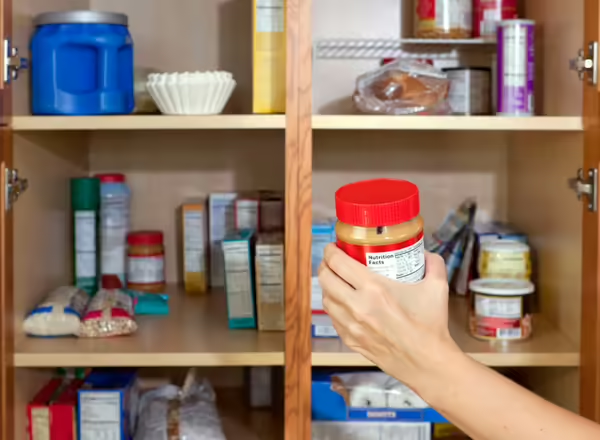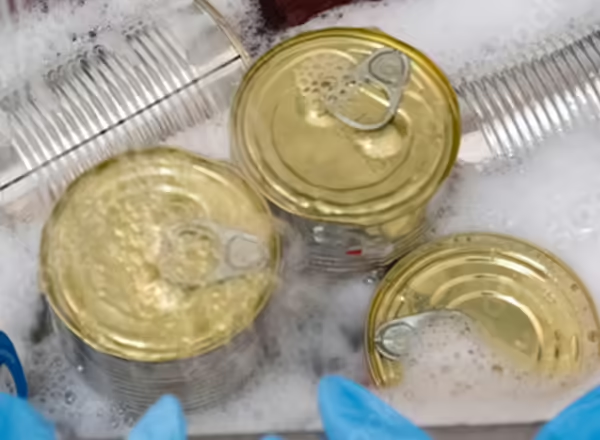Title
Food Safety After Floods
According to the Illinois Department of Natural Resources, 90% of all declared disasters in Illinois are floods. Floodwater can contain many forms of debris, including sewage, chemicals, household or industrial waste, and disease-causing bacteria and microorganisms. Be prepared to keep food safe during and after a flood to prevent illness.
Floods may cause power outages or difficult travel. If flooding is expected, put together a three-day water and food supply, including one gallon of water per person per day and ready-to-eat, nonperishable foods.
- Keep water in food-grade containers; avoid storing water in containers like laundry pails or cleaning buckets.
- Store food and water supplies in water-resistant containers, such as heavy plastic totes.
- Keep your emergency food and water supply in a cool, dark place.
- Once each year, check product date labels; replenish supplies, if needed.
- Pack soap for handwashing and a 60% alcohol-based hand sanitizer or wipes. If clean water is unavailable, use hand sanitizer.
After a Flood

Throw away food or drink items that were exposed to flood waters, including meat, poultry, fish, dairy, eggs, and fresh produce, along with food packaged in non-waterproof containers, such as:
- Bottles with crimped caps
- Cardboard boxes
- Cardboard drink containers (milk and juice boxes)
- Damaged canned food (swollen, leaking, rusted, punctured, crushed, or dented)
- Pull-top packaging
- Screw caps
- Snap lids

Keep undamaged, commercially prepared food and drink in waterproof packaging, such as all-metal cans, and “retort pouches,” such as seafood pouches. Disinfect packages before opening and eating the food.
Disinfect Food and Drink Packages
- Remove the labels, if possible.
- Brush or wipe away any dirt from the packaging.
- Thoroughly wash packaging with hot soapy water.
- Rinse with water that is safe for drinking.
- Sanitize by immersion using one of the following two methods:
- Place containers in water and boil for 2 minutes (OR)
- Use a chemical sanitizer by combining 1 cup of regular, unscented household bleach with 5 gallons of water. Soak containers for 15 minutes.
- Air dry all items for at least 1 hour before opening or storing.
- If labels were removed, write package contents and dates on the container. Include sell-by, use-by, and best-by dates on the date label.
Title
Water Safety
Bottled water exposed to flood waters is likely not safe to drink. Lids and seals on most individual bottles and gallon containers are not waterproof. Instead, disinfect water before drinking or using it for cooking.
How to Disinfect Water
Always check with the local health department first to see if it is appropriate to disinfect water after a flood. Local agencies may have certain requirements. Otherwise, allow cloudy water to settle, draw off the clear water, and choose one of these steps to disinfect:
Disinfect by Boiling
This process kills most organisms.
- Boil water for 1 minute and let it cool.
- Store cooled water in clean containers with covers.
Disinfect with Bleach Solution
This will kill some organisms, but not all.
- Add ⅛ teaspoon of regular, unscented household bleach to 1 gallon of water.
- Stir well and let stand for 30 minutes before using.
- Store in clean containers with covers.
Clean and Sanitize Kitchen
Kitchen Surfaces
- Wash surfaces with soap and clean water.
- Rinse with clean water.
- Add 2 Tablespoons of regular, unscented household bleach per 1 gallon of water to a spray bottle or bucket.
- Spray the bleach and water mixture on the surface or apply with a clean, wet cloth.
- Let all equipment and surfaces air dry. Bleach requires a contact time of at least 1 minute to be effective.
- Remember to label any sanitizer solution in spray bottles or buckets.
- Bleach solutions should be made fresh each day.
Kitchen Appliances
Work with an appliance technician or electrician before turning on ovens, refrigerators, or other electronic appliances. Depending on the damage, the professional may recommend replacing certain parts or the equipment entirely.